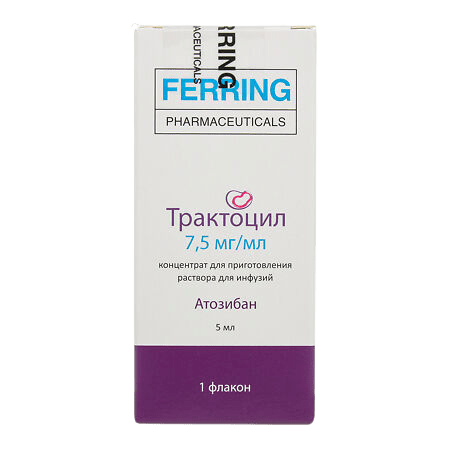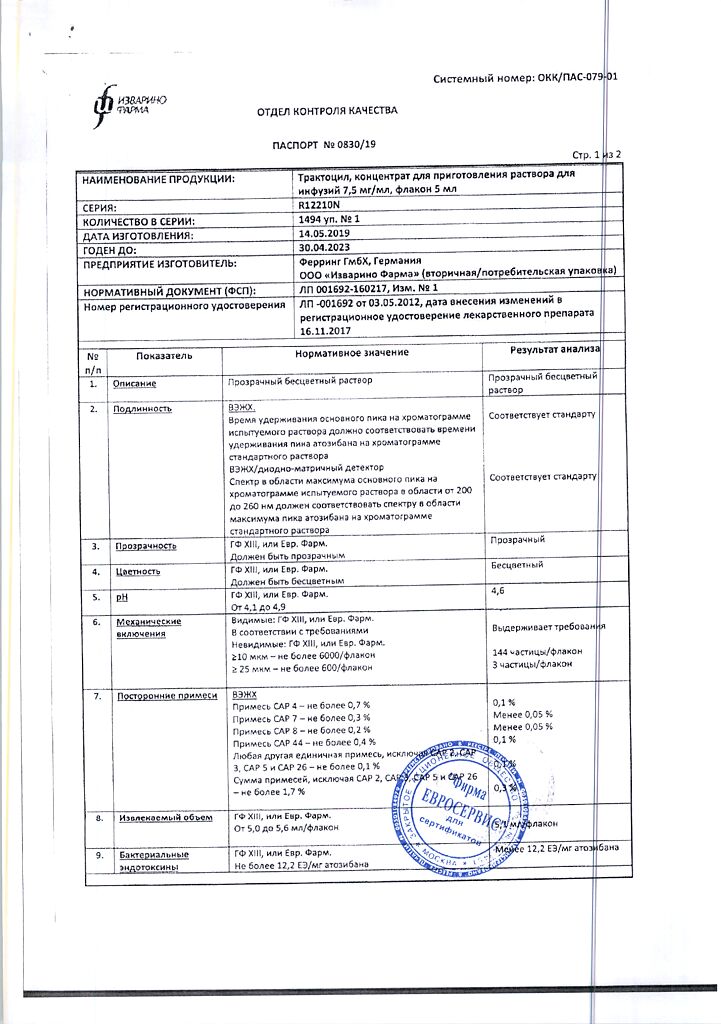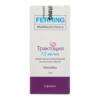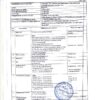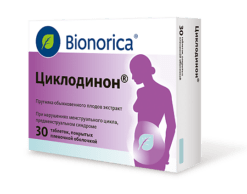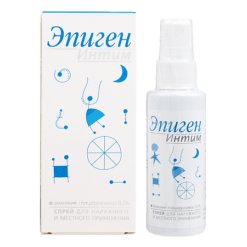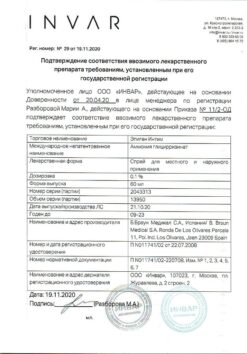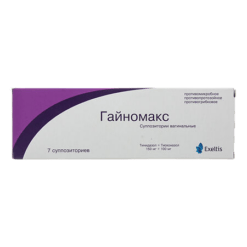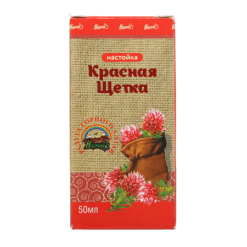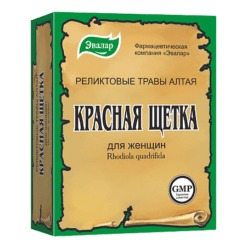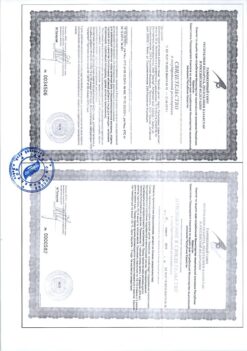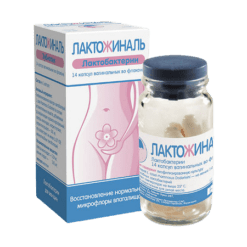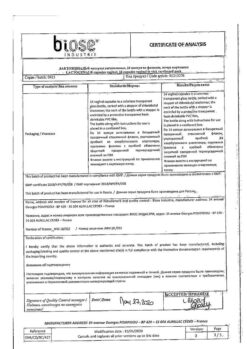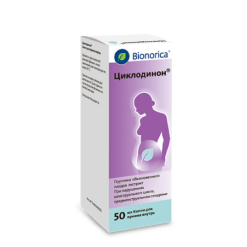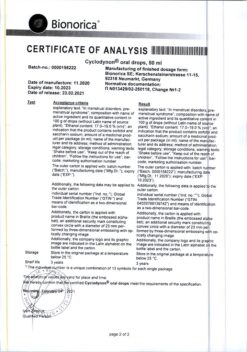No products in the cart.
Traktocil, 7.5 mg/ml 5 ml
€1.00
Out of stock
(E-mail when Stock is available)
Description
The active ingredient of Tractocil is atoziban, a synthetic peptide that is a competitive antagonist of human oxytocin at the receptor level.
Atoziban, binding to oxytocin receptors, reduces the frequency of uterine contractions and myometrial tone, leading to suppression of uterine contractility. Atoziban also binds to vasopressin receptors, inhibiting the effect of vasopressin, but has no effect on cardiovascular system.
In cases of premature labor in women atoziban inhibits uterine contractions and provides uterine functional rest in recommended doses. Uterine relaxation begins immediately after administering atoziban and myometrium contractile activity is significantly reduced within 10 minutes, maintaining stable functional peace of the uterus (<4 contractions/h) for 12 hours.
Pharmacokinetics
Pharmacokinetic parameters (Vd, Cl, T1/2).
Distribution.
After intravenous infusion (300 mcg/min for 6-12 h), the Cmax of atoziban in plasma is reached within 1 h after the start of infusion (average (442±73) ng/mL, range 298 to 533 ng/mL). Binding to plasma proteins is 46-48%. Atoziban penetrates through the placental barrier. After administration of Tractocil at a rate of 300 µg/min, the ratio of atoziban concentration in the fetus to that of atoziban in the mother is 0.12. The mean Vd value is (18.3 ± 6.8) l.
Metabolism.
Two metabolites have been identified in plasma and urine. The ratio of the concentration of the main metabolite M1 to the plasma concentration of atoziban was 1.4 and 2.8 at the second hour of infusion and after discontinuation of the infusion, respectively. M1 metabolite has pharmacological activity on a par with atoziban and penetrates into breast milk.
Inhibition of cytochrome P450 isoforms by atoziban is unlikely.
Excretion.
After discontinuation of infusion, plasma drug concentration decreases rapidly with initial (Ta) and final (Tp) T1/2 values of (0.21±0.01) and (1.7±0.3) h, respectively. The mean drug clearance is (41.8±8.2) l/h.
Atoziban is determined in the urine in very small amounts, its concentration in the urine being 50 times lower than that of M1. The amount of atoziban excreted with feces was not determined.
Indications
Indications
Tractocil is used for the threat of premature birth in pregnant women in the following cases:
regular uterine contractions lasting at least 30 seconds and frequency more than 4 within 30 minutes;
cervical dilatation from 1 to 3 cm (0–3 cm for nulliparous women);
age over 18 years;
gestational age from 24 to 33 completed weeks;
normal fetal heart rate.
Pharmacological effect
Pharmacological effect
Pharmacodynamics
The active component of Tractocil is atosiban, a synthetic peptide that is a competitive antagonist of human oxytocin at the receptor level.
Atosiban, by binding to oxytocin receptors, reduces the frequency of uterine contractions and myometrial tone, leading to suppression of uterine contractility. Atosiban also binds to vasopressin receptors, inhibiting the effect of vasopressin, but does not affect the cardiovascular system.
If a woman develops premature labor, atosiban in recommended doses suppresses uterine contractions and provides functional rest to the uterus. Relaxation of the uterus begins immediately after the administration of atosiban, within 10 minutes the contractile activity of the myometrium is significantly reduced, maintaining stable functional rest of the uterus (<4 contractions/hour) for 12 hours.PharmacokineticsPharmacokinetic parameters (Vd, Cl, T1/2).Distribution.After IV infusion (300 mcg/min for 6–12 hours), the Cmax of atosiban in plasma is achieved within 1 hour after the start of infusion (mean (442 ± 73) ng/ml, range from 298 to 533 ng/ml). Plasma protein binding is 46–48%. Atosiban penetrates the placental barrier. After administration of Tractocil at a rate of 300 mcg/min, the ratio of the concentration of atosiban in the fetus to the concentration of atosiban in the mother is 0.12. Average Vd value – (18.3 ± 6.8) l.Metabolism.Two metabolites were identified in blood plasma and urine. The ratio of the concentration of the main metabolite M1 and the concentration of atosiban in the blood plasma was 1.4 and 2.8 at the second hour of infusion and after its cessation, respectively. Metabolite M1 has pharmacological activity on par with atosiban and passes into breast milk.
Inhibition of cytochrome P450 isoforms by atosiban is unlikely.
Excretion.
After stopping the infusion, the concentration of the drug in plasma decreases rapidly with the values of the initial (Ta) and final (Tp) T1/2 (0.21 ± 0.01) and (1.7 ± 0.3) h, respectively. The average clearance of the drug is (41.8±8.2) l/h.
Atosiban is detected in urine in very small quantities, its concentration in urine is 50 times lower than the concentration of M1. The amount of atosiban excreted in feces was not determined.
Special instructions
Special instructions
If there is no decrease in the contractile activity of the uterus during the administration of Tractocil, uterine contractions should be monitored, as well as the fetal heart rate. The use of other medications should also be considered.
There is no experience with the use of atosiban in patients with impaired liver and kidney function.
Atosiban is not used in cases of abnormal placenta attachment. As an oxytocin antagonist, atosiban may theoretically promote uterine relaxation and provoke postpartum uterine bleeding, so the degree of blood loss should be constantly assessed after childbirth.
Influence on the ability to drive a car and operate machinery that requires increased attention. Not applicable, given the indications for use.
Active ingredient
Active ingredient
Atosiban
Composition
Composition
Composition per 1 ml:
active ingredient:
atosiban acetate in terms of atosiban 7.5 mg;
excipients:
mannitol 50 mg,
hydrochloric acid to pH 4.5,
water for injection up to 1 ml.
Pregnancy
Pregnancy
Tractocil should only be used in cases of diagnosed preterm labor between 24 and 33 completed weeks of pregnancy.
Tractocil is contraindicated during breastfeeding.
Contraindications
Contraindications
The gestational age is less than 24 or more than 33 completed weeks;
premature rupture of membranes during pregnancy more than 30 weeks;
intrauterine growth retardation;
abnormal fetal heart rate;
uterine bleeding requiring immediate delivery;
eclampsia and severe preeclampsia requiring immediate delivery;
intrauterine fetal death;
suspicion of intrauterine infection;
placenta previa;
placental abruption;
any conditions of the mother and fetus in which the continuation of pregnancy is dangerous;
breast-feeding;
hypersensitivity to atosiban or to one of the components of the drug.
With caution: if premature rupture of the membranes is suspected, the use of Tractocil to prolong labor should be weighed against the potential risk of developing chorioamnionitis. Use Tractocil with caution during multiple pregnancies, as well as during pregnancy 24–27 weeks (due to the lack of sufficient clinical experience).
Side Effects
Side Effects
From the gastrointestinal tract: very often (>1/10) – nausea, less often – vomiting.
From the side of metabolism: often (>1/100, <1/10) - hyperglycemia.From the side of the central nervous system: often (>1/100, 1/1000, <1/100) - insomnia.From the cardiovascular system: often (>1/100, <1/10) - tachycardia, arterial hypotension, hot flashes.Skin: rarely (>1/1000, <1/100) - itching, skin rash.Local reactions: rarely (>1/1000, <1/100) - hyperthermia at the injection site.From the reproductive organs: very rarely (>1/10000, <1/1000) - uterine bleeding/uterine atony.If any of the side effects indicated in the instructions worsen, or any other side effects not listed in the instructions develop, you should inform your doctor.
Interaction
Interaction
Interaction with other drugs
Tractocil does not affect the pharmacokinetics of drugs metabolized with the participation of cytochrome P450.
When using Tractocil and betamethasone together, no clinically significant interactions were observed.
Labetalol does not affect the pharmacokinetics of Tractocil.
Interaction of the drug Tractocil with antibiotics is unlikely.
The combined use of the drug Tractocil with ergot alkaloids is inappropriate due to the opposite pharmacological action and indications for use.
Overdose
Overdose
There are several known cases of overdose. There are no specific symptoms or signs. The specific antidote is unknown.
Treatment consists of symptomatic and supportive therapy.
Storage conditions
Storage conditions
The drug should be stored out of the reach of children in its original packaging at a temperature of 2-8°C. After opening the bottle of concentrate, dilution should be done immediately. The diluted solution for intravenous infusion should be used within 24 hours after preparation.
Shelf life
Shelf life
4 years.
Manufacturer
Manufacturer
Ferring GmbH, Switzerland
Additional information
| Shelf life | 4 years. |
|---|---|
| Conditions of storage | The drug should be kept out of reach of children in the original package at 2-8°C. After opening the bottle with concentrate the dilution should be carried out immediately. Diluted solution for IV infusion should be used within 24 hours after preparation. |
| Manufacturer | Ferring GmbH, Switzerland |
| Medication form | concentrate for preparation of infusion solution |
| Brand | Ferring GmbH |
Related products
Gynecology and Obstetrics
Buy Traktocil, 7.5 mg/ml 5 ml with delivery to USA, UK, Europe and over 120 other countries.

